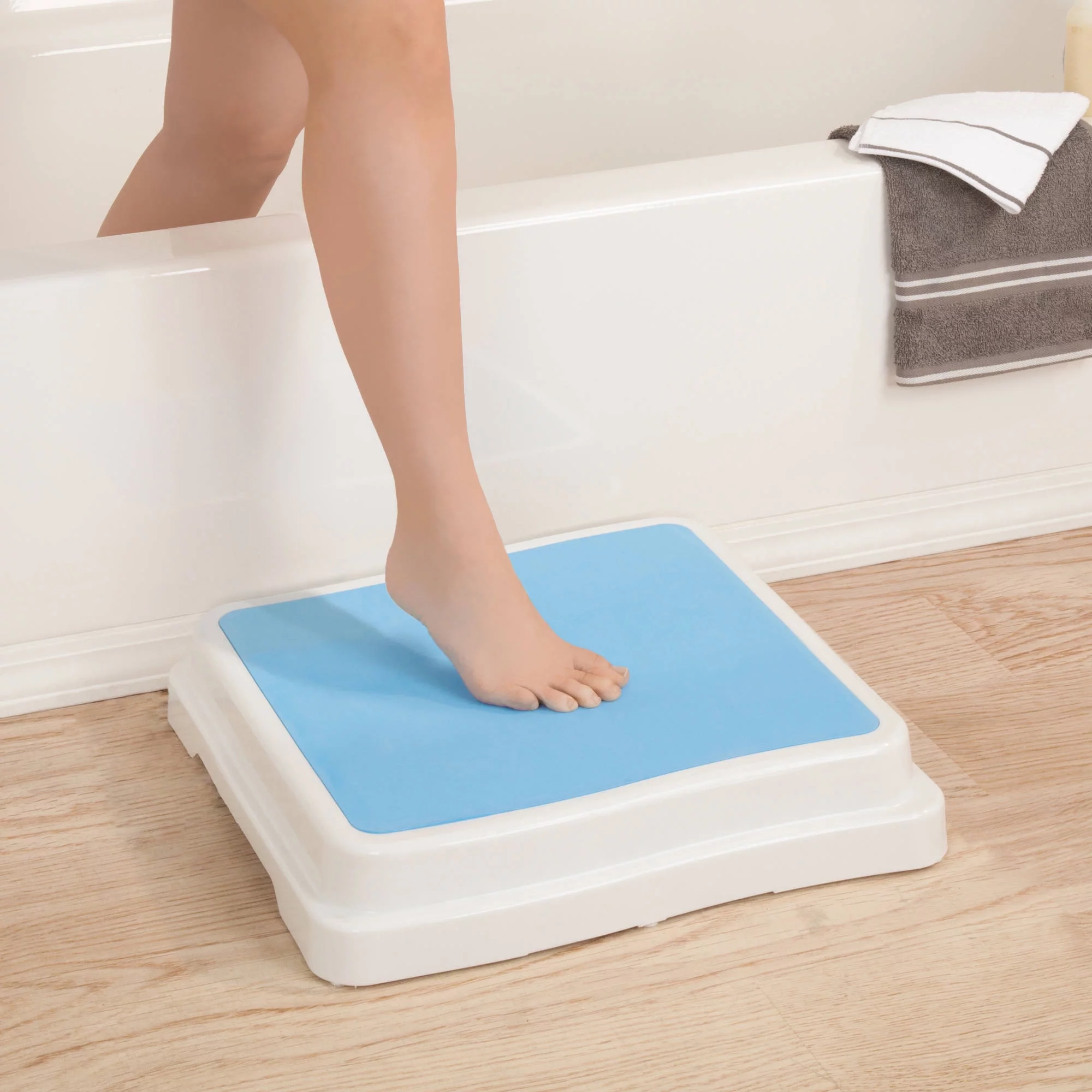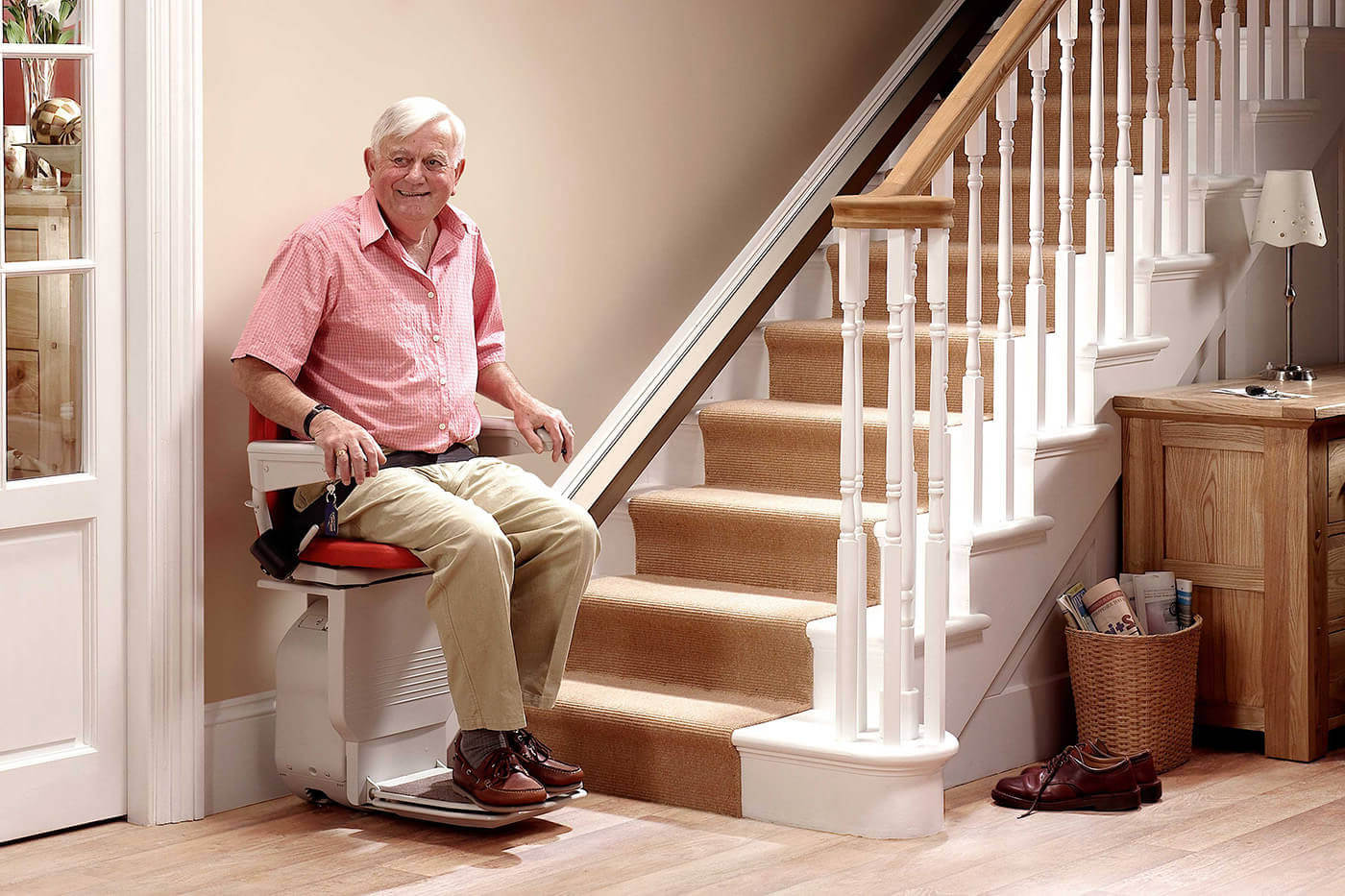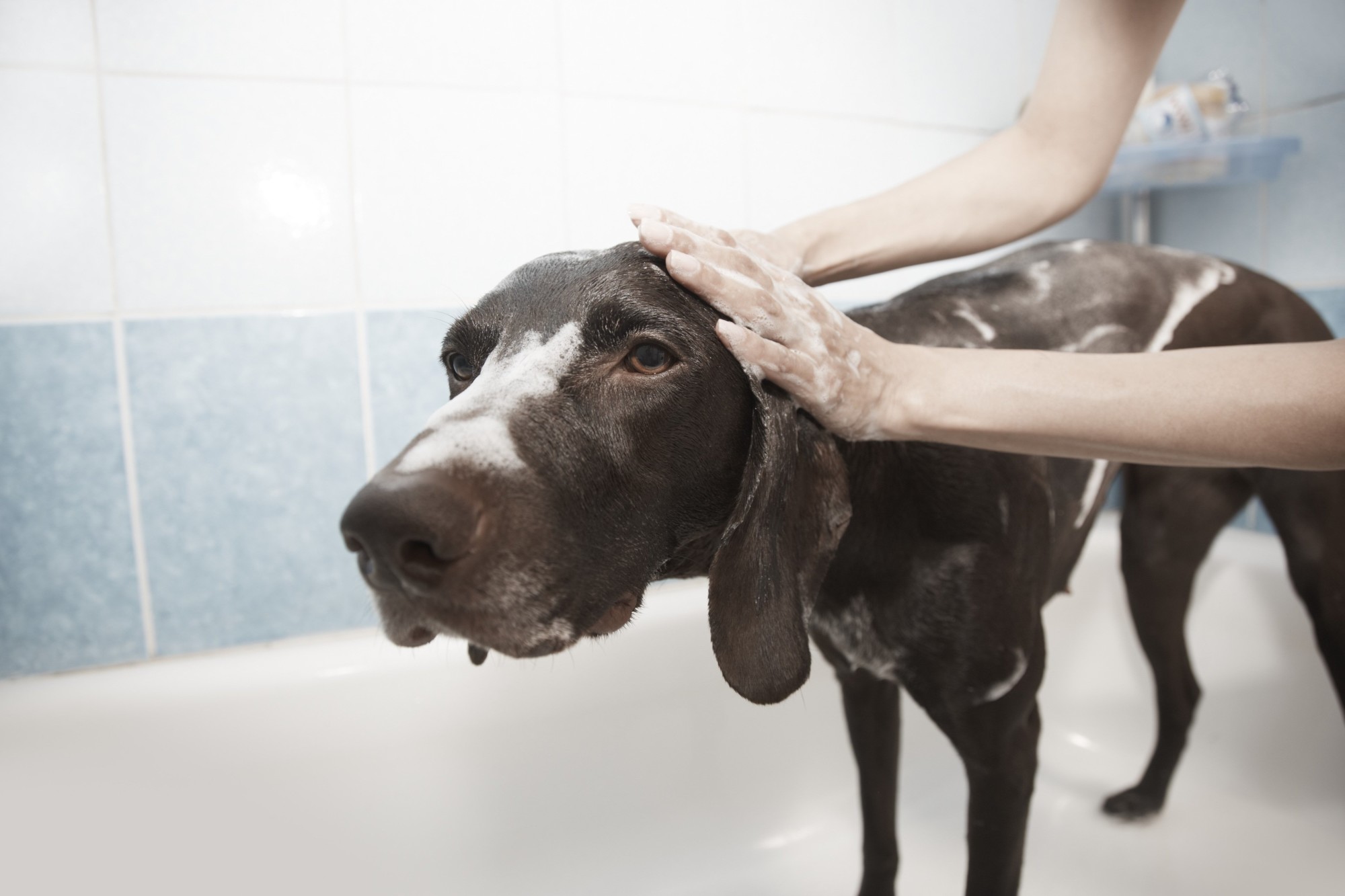Home>Furniture & Design>Bathroom Accessories>How To Get The Elderly Out Of A Bathtub


Bathroom Accessories
How To Get The Elderly Out Of A Bathtub
Modified: August 16, 2024
Learn how to safely assist the elderly out of the bathtub with the right bathroom accessories. Discover essential tips and products for a secure bathing experience.
(Many of the links in this article redirect to a specific reviewed product. Your purchase of these products through affiliate links helps to generate commission for Storables.com, at no extra cost. Learn more)
Introduction
Helping an elderly person out of a bathtub can be a challenging and delicate task. As we age, simple activities that were once effortless can become increasingly difficult. For many seniors, maneuvering in and out of a bathtub can pose a significant risk of slips, falls, and injuries. As a caregiver or a concerned family member, it's essential to understand the unique challenges that the elderly face in this situation and to be equipped with the necessary knowledge and tools to assist them safely.
The process of getting an elderly individual out of a bathtub requires patience, empathy, and a thorough understanding of their physical limitations. It's crucial to approach this task with sensitivity and respect, acknowledging the individual's need for privacy and dignity. By taking the time to learn about the safety precautions, assisting techniques, and specialized equipment available, you can ensure a safer and more comfortable bathing experience for your loved one.
Key Takeaways:
- Helping the elderly out of a bathtub can be challenging. By using non-slip surfaces, grab bars, and clear pathways, caregivers can make the bathing experience safer and more comfortable for seniors.
- Assisting the elderly out of a bathtub requires patience and understanding. By communicating clearly, providing stability, and using specialized equipment, caregivers can ensure a smooth and dignified transition for seniors.
Read more: How To Get Out Of A Bathtub
Understanding the Challenges
Helping an elderly individual out of a bathtub presents a unique set of challenges that require careful consideration and understanding. As we age, our bodies undergo various physical changes, including reduced muscle strength, joint flexibility, and balance. These age-related changes can significantly impact an individual's ability to navigate the slippery and confined space of a bathtub safely. Understanding the challenges associated with assisting the elderly out of a bathtub is crucial for ensuring their well-being and safety.
One of the primary challenges is the increased risk of slips and falls. The combination of wet surfaces, limited space, and the need to lift oneself out of the tub can create a hazardous environment for seniors. Reduced mobility and balance issues further exacerbate the risk, making it essential to approach the task with caution and attentiveness.
Moreover, the fear of falling can also be a significant psychological challenge for the elderly. The anxiety and apprehension associated with the possibility of slipping in the bathtub can lead to a loss of confidence and independence. This fear may result in individuals avoiding or rushing through the bathing process, both of which can compromise their safety and well-being.
Additionally, the physical strain of lifting oneself out of a bathtub can be overwhelming for many seniors. The combination of bending, lifting, and balancing requires a level of strength and agility that may be diminished with age. This can lead to feelings of frustration and helplessness, further complicating the bathing experience for the elderly.
Furthermore, privacy and dignity are essential considerations when assisting the elderly out of a bathtub. Many individuals may feel vulnerable and self-conscious during this process, making it crucial to approach the task with empathy and respect for their autonomy.
Understanding these challenges underscores the importance of implementing appropriate safety measures, assisting techniques, and utilizing specialized equipment to facilitate a secure and comfortable bathing experience for the elderly. By acknowledging and addressing these challenges, caregivers and family members can provide the necessary support and assistance while preserving the individual's dignity and well-being.
Safety Precautions
When assisting an elderly individual out of a bathtub, prioritizing safety is paramount. Implementing appropriate safety precautions can significantly reduce the risk of accidents and ensure a secure bathing experience for the elderly. Here are essential safety measures to consider:
-
Non-Slip Surfaces: Installing non-slip mats or adhesive strips in the bathtub can provide added traction and minimize the risk of slipping. These simple yet effective measures create a safer bathing environment by enhancing stability and reducing the likelihood of falls.
-
Grab Bars: Installing sturdy grab bars within the bathtub area and near the bathing area can offer crucial support for seniors as they maneuver in and out of the tub. These bars provide a reliable handhold, aiding in balance and stability during the transition.
-
Proper Lighting: Adequate lighting in the bathroom is essential for visibility and safety. Ensuring that the bathing area is well-lit can help seniors navigate the space more confidently and identify potential hazards, such as wet surfaces, more easily.
-
Clear Pathways: Keeping the pathway to the bathtub clear of obstacles and clutter is essential to prevent tripping or stumbling. Maintaining a clear and unobstructed route to the bathtub facilitates safe and unimpeded access for the elderly.
-
Assessing Physical Condition: Before assisting an elderly individual out of the bathtub, it's crucial to assess their physical condition and any specific challenges they may face. Understanding their mobility limitations, balance issues, and any recent changes in health can inform the approach to providing assistance.
-
Communication and Reassurance: Open communication and reassurance are vital during the process of assisting the elderly out of the bathtub. Providing clear instructions, offering verbal support, and maintaining a calm and reassuring demeanor can help alleviate anxiety and build trust.
-
Assistance and Supervision: Offering physical assistance and close supervision during the bathing process is essential for ensuring the safety of the elderly. Being present to lend a supportive hand and intervene if necessary can prevent accidents and provide peace of mind.
-
Encouraging Independence: While providing assistance, it's important to encourage as much independence as possible. Allowing the elderly individual to participate in the process to the best of their ability can foster a sense of autonomy while ensuring their safety.
By incorporating these safety precautions into the bathing routine, caregivers and family members can create a secure and supportive environment for the elderly. These measures not only minimize the risk of accidents but also promote confidence and well-being during the bathing experience.
Assisting Techniques
Assisting an elderly individual out of a bathtub requires a thoughtful and considerate approach, taking into account their unique needs and limitations. By employing appropriate assisting techniques, caregivers and family members can ensure a safe and dignified bathing experience for the elderly. Here are essential techniques to facilitate the process:
1. Clear Communication and Preparation
Before initiating the process of assisting the elderly out of the bathtub, clear communication is essential. Engage in a conversation to explain the steps involved and reassure the individual. Ensure that the bathing area is well-prepared, with non-slip surfaces, adequate lighting, and grab bars in place.
Read more: How To Get Oatmeal Out Of Bathtub
2. Providing Stability and Support
As the elderly individual prepares to exit the bathtub, offer a stable and supportive presence. Encourage them to hold onto grab bars or sturdy surfaces for added stability. Position yourself in a way that allows you to provide physical support and assistance as needed.
3. Utilizing Transfer Bench or Chair
For individuals with significant mobility challenges, a transfer bench or chair can be invaluable. These specialized tools allow the individual to sit securely while transitioning in and out of the bathtub. Position the bench or chair to facilitate a smooth and controlled movement.
4. Assisting with Movement
When the elderly individual is ready to exit the bathtub, offer gentle assistance with their movement. Support them as they lift themselves or stand, ensuring that they feel secure and balanced throughout the process. Maintain a steady and reassuring presence to alleviate any apprehension.
5. Encouraging Gradual Movements
Encourage the elderly individual to proceed with gradual movements, avoiding sudden or jerky actions. Emphasize the importance of taking their time and moving at a comfortable pace. This approach minimizes the risk of strain or imbalance during the transition.
Read more: How To Get Bathtub Stopper Out
6. Maintaining Dignity and Privacy
Respect the individual's need for privacy and dignity throughout the process. Offer assistance discreetly and consider using a towel or robe to provide coverage as they exit the bathtub. Communicate openly and respectfully to ensure their comfort and autonomy.
7. Offering Post-Bathing Support
Once the individual has safely exited the bathtub, continue to provide support as they dry off and prepare for the next steps. Ensure that the bathroom environment remains safe and accessible, allowing them to navigate with confidence.
By implementing these assisting techniques, caregivers and family members can facilitate a smooth and secure transition for the elderly out of the bathtub. These approaches prioritize safety, respect, and the individual's well-being, fostering a positive and supportive bathing experience.
Equipment and Tools
When it comes to assisting the elderly out of a bathtub, having the right equipment and tools can make a significant difference in ensuring their safety and comfort. These specialized aids are designed to address the unique challenges that seniors may encounter during the bathing process, providing support, stability, and ease of movement. By incorporating appropriate equipment and tools into the bathing routine, caregivers and family members can enhance the overall experience for the elderly.
Transfer Bench or Chair
A transfer bench or chair is a fundamental tool for individuals with limited mobility or balance issues. These devices feature a stable seat that extends outside the bathtub, allowing the individual to sit securely while transitioning in and out of the tub. The bench or chair provides a safe and controlled area for the elderly to maneuver, reducing the risk of slips and falls during the bathing process.
Read more: How To Get Dye Out Of A Bathtub
Grab Bars
Sturdy grab bars installed within the bathtub area and near the bathing space are essential for providing reliable support and stability. These bars offer a secure handhold for seniors as they navigate the transition in and out of the tub. By grasping the grab bars, individuals can maintain their balance and leverage, minimizing the potential for accidents and enhancing their confidence during the bathing experience.
Non-Slip Mats and Adhesive Strips
Non-slip mats and adhesive strips are simple yet effective tools for creating a safer bathing environment. Placing these traction-enhancing aids within the bathtub significantly reduces the risk of slipping on wet surfaces. The added grip and stability provided by non-slip mats and strips contribute to a secure and confident bathing experience for the elderly.
Shower Chair
For individuals who prefer to shower rather than bathe, a shower chair can offer invaluable support and comfort. These chairs provide a stable seating option within the shower area, allowing seniors to bathe while seated securely. The presence of a shower chair promotes independence and safety, enabling individuals to enjoy a thorough and relaxing bathing experience.
Handheld Showerhead
A handheld showerhead is a versatile tool that allows for greater flexibility and control during the bathing process. This adjustable showerhead can be directed precisely to target specific areas, accommodating the individual's preferences and needs. The convenience of a handheld showerhead enhances the bathing experience, offering comfort and ease of use for the elderly.
Read more: How To Get Grime Out Of A Bathtub
Elevated Toilet Seat
In addition to assisting individuals in and out of the bathtub, an elevated toilet seat can contribute to their overall safety and convenience in the bathroom. This specialized seat raises the height of the toilet, making it easier for seniors to sit and stand, reducing strain and promoting independence in essential daily activities.
By incorporating these essential equipment and tools into the bathing routine, caregivers and family members can create a supportive and secure environment for the elderly. These aids not only address the specific challenges associated with bathing but also promote independence, confidence, and well-being for the individuals in their care.
Conclusion
In conclusion, assisting the elderly out of a bathtub requires a multifaceted approach that prioritizes safety, respect, and the individual's well-being. By understanding the challenges associated with this task, implementing essential safety precautions, employing thoughtful assisting techniques, and utilizing specialized equipment, caregivers and family members can ensure a secure and dignified bathing experience for the elderly.
It is crucial to recognize the physical and psychological challenges that seniors may face when navigating the confined and slippery space of a bathtub. Reduced muscle strength, balance issues, and the fear of falling can significantly impact their confidence and independence during the bathing process. Acknowledging these challenges underscores the importance of approaching the task with empathy, patience, and a deep understanding of the individual's needs.
By implementing safety precautions such as non-slip surfaces, grab bars, proper lighting, and clear pathways, caregivers can create a secure bathing environment that minimizes the risk of accidents. Open communication, reassurance, and the encouragement of independence further contribute to a positive and supportive bathing experience for the elderly.
Employing assisting techniques that prioritize stability, gradual movement, and respect for privacy allows caregivers to facilitate a smooth and dignified transition for the elderly out of the bathtub. Additionally, the use of specialized equipment such as transfer benches, grab bars, non-slip mats, and shower chairs enhances the overall safety and comfort of the bathing experience.
Ultimately, the goal of assisting the elderly out of a bathtub goes beyond the physical act itself. It encompasses the preservation of their dignity, autonomy, and well-being. By approaching this task with sensitivity and a commitment to providing the necessary support, caregivers and family members can ensure that the elderly can bathe safely and comfortably, promoting their overall quality of life.
In conclusion, the process of assisting the elderly out of a bathtub is a meaningful opportunity to demonstrate care, respect, and understanding. By incorporating the principles and techniques outlined in this guide, caregivers and family members can make a positive difference in the lives of the elderly, fostering a bathing experience that is safe, dignified, and supportive.
Frequently Asked Questions about How To Get The Elderly Out Of A Bathtub
Was this page helpful?
At Storables.com, we guarantee accurate and reliable information. Our content, validated by Expert Board Contributors, is crafted following stringent Editorial Policies. We're committed to providing you with well-researched, expert-backed insights for all your informational needs.












0 thoughts on “How To Get The Elderly Out Of A Bathtub”